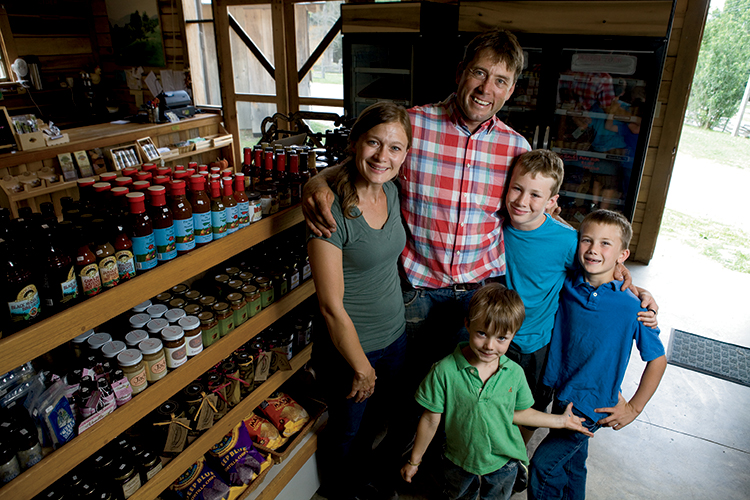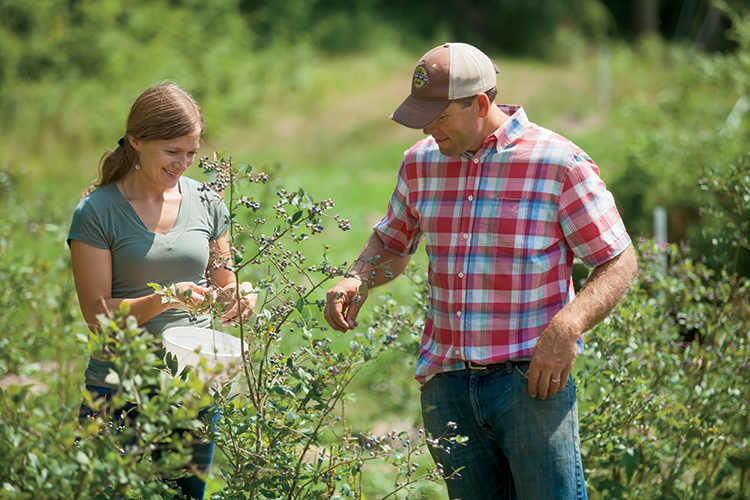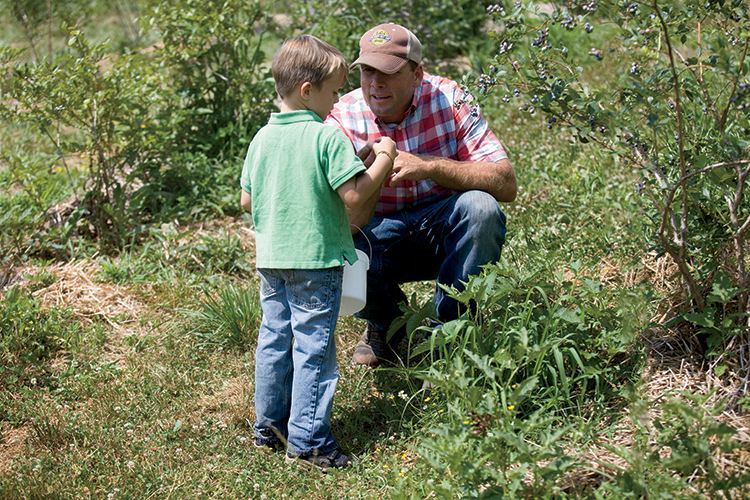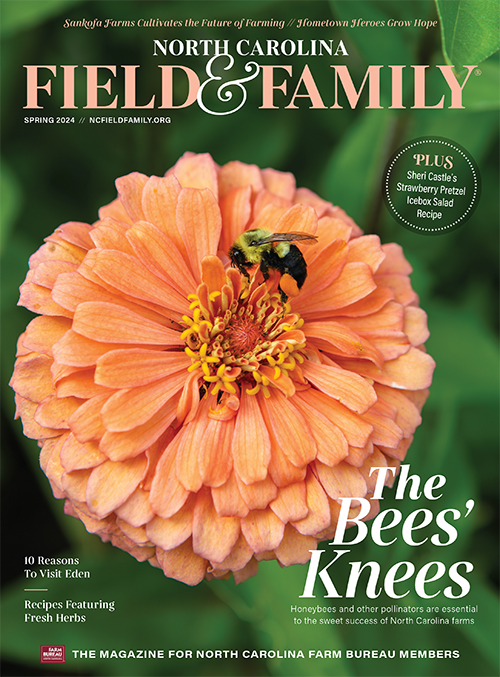North Carolina Farms Offer Healthy, Fresh and Local
North Carolina farms reconnect with customers to offer produce and meats.
Rachel Stroop |Despite his parents’ attempts to steer him away from the demanding agricultural business his great-grandparents started in 1916, young Jamie Ager already had his sights set on a former dairy farm that had been sitting idle on the family’s Fairview property for more than a decade.
“The farm was needing a new thing,” says Ager, 37. “I saw an opportunity to differentiate ourselves and be able to make a living here.”
In 2002, Ager and his wife Amy – both had just graduated with agricultural degrees from Warren Wilson College – established Hickory Nut Gap Farm, which produces beef, pork, chicken, turkey, eggs, fruits and vegetables on approximately 100 acres.
“We want to share the family farm experience and promote high-quality, sustainably raised meats and to essentially create more opportunity in the marketplace [for other small farmers],” Ager says.
Today, Hickory Nut Gap Farm meats are distributed fresh to Earth Fare and Greenlife Grocery, served in 25 local restaurants, and sold online, at farmers markets and at the farm’s year-round store. Over the years, word of the Agers’ sustainable practices has spread.
See More
President Barack Obama ate bacon from Hickory Nut Gap Farm during a visit to the Grove Park Inn in Asheville in 2010, and in 2011, the Agers received the Young Farmer of the Year Award from the Carolina Farm Stewardship Association.
The practice of selling fresh, local food directly to consumers is on the rise, says Heather Barnes, a marketing specialist at the N.C. Department of Agriculture and Consumer Services.
“Consumers want to connect to the farm,” she says, noting that the number of reported farmers markets in the state grew from 217 in 2011 to 248 in 2013, and that there are more who did not participate in the official count. “By purchasing local, particularly at a farmers market, roadside stand, through a CSA (Community Supported Agriculture) program or other direct-marketing method, consumers can develop a relationship with the person growing the food they consume. We are seeing the desire to support local farmers at all levels, from local farmers markets to restaurants, grocery stores, schools, agritourism and other segments of the market.”
At the Agers’ farm, pigs cool off in the mud, and enjoy a diet of grain and foraged acorns and tubers. Chickens and turkeys are raised in small batches and, in addition to eating corn and soybean-based grain, peck and scratch for insects. Cattle graze on grass in green pastures.
“Grass is such an amazing thing,” Ager says. “It’s renewable. It grows back every year. And humans can’t consume it because we don’t have the type of stomach that can consume grass. Where you can’t farm on steep slopes, grass will always grow. So you’re ending up with a product at the end of the day that is good for the environment.”
Free Recipe
The farm also grows apples, blueberries, raspberries, blackberries, asparagus, and shiitake and blue oyster mushrooms in hardwood logs at the end of a nature trail.
Customers throughout Buncombe County have wholeheartedly supported the venture. “Our little farm store here does way more business than we ever thought it would,” Ager says. “And people like to come out to the farm and visit with the animals and do all those things that the farm offers. We get to give them the real experience of agriculture.”
The business is truly a family affair, with budding farmers Cyrus, 10, Nolin, 7, and Levi, 4, often helping their dad feed chickens, move cows to pasture and show off baby chicks as part of a thriving agritourism program. Guests pick their own berries and take guided tours, while school groups of all ages learn about sustainable farming.
“Part of our mission is to teach people about farming and agriculture,” Ager says. “It’s one thing to study it on an academic level, but it’s another thing to go and do it, touch it, and feel it. So many people are disconnected from farming in this day and age that we feel like it’s nice to be able to give ’em the chance to not only understand it but to see it.”
– Nancy Henderson







